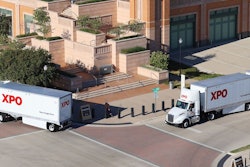Detention is a significant problem for the freight transportation industry. According to a study from the American Transportation Research Institute (ATRI) released in 2023, detention and delay at customer facilities was the fourth highest industry issue for drivers and sixth highest for the industry overall. In fact, detention has been in the top-ten list in the ATRI survey for over a decade. Detention has been around for a long time, and it is not going away.
Far too many carriers have no process in place to manage detention. Instead, these companies simply react on the spot to each occurrence and unrealistically hope that it does not happen again. The carriers who have the most success with mitigating detention take a different approach. Having accepted the fact that detention is part of their daily business life and part of the industry, they proactively manage detention. This is accomplished by establishing a well-defined process that is followed consistently.
As Solutions Architects at McLeod Software part of our job is to gauge the challenges that trucking companies face and then help shape the technology solutions that address those challenges. This led us to speak with representatives from several truckload carriers to learn about the detention management processes they have created. From their input we learned about some of the best practices for managing detention and the role technology plays.
Create a strategic process
Begin the work of detention management by creating a well-defined process that everyone can follow.
• Establish a set of rules with customers that are clearly articulated and transparent.
• Make sure you already have an existing set of terms and conditions that you want to be part of a new contract.
• Give your customer service personnel some leeway on accepting or rejecting loads to locations with a history of detention issues.
• Include all affected areas of the business in the detention policy and processes—sales, drivers, management, and back-office.
• Know the history of locations where your trucks and drivers are being detained.
Take action before detention occurs
It pays to be proactive with detention and look for ways to mitigate the damage and disruption it can cause.
• Use detention history to evaluate loads and negotiate rates.
• Consider negotiating a way to avoid rejecting the load, such as getting an agreement to schedule the load at a less busy time of day or a different day of the week.
• Keep Dispatch and drivers informed so that everyone knows in advance when a load is at risk for detention.
• Use input from drivers to monitor all movements.
• Be diligent in warning the customer and involve not only the consignee, but other stakeholders, such as the controlling party.
Execute the process diligently when detention occurs
Once a truck is detained, closely follow the steps laid out in your detention process.
• Ensure that relevant information is easily accessible by anyone who needs to review it.
• Notify involved parties as specified as part of your defined process and according to any specific rules contained in customer contracts.
• Make sure the driver knows what is required in terms of signed paperwork.
• Let Operations manage the event.
• Pass along all of the documentation to Billing for resolution.
Ensure that customers are billed and drivers are paid
It is billing’s job to make sure everything is in place to bill customers for detention and to pay drivers in a timely manner for being detained. If Billing finds something missing, they will work with Operations and the driver, but at this point Billing should remain in charge.
• Detention is normally included in the load invoice as an accessorial, though some customers request detention to be billed separately.
• Company drivers should be paid for all events but there may be additional requirements for owner-operators.
Automation streamlines detention management
The contrast between managing detention manually and managing it with the support of the best automation is stark. Without the right technology in place, detention chores all too often take a back seat to more pressing matters. The result is that notifications to the customers as required in the customer contracts are never sent out, so it’s not possible to bill the customer for the lost time and potential revenue is left on the table. The driver’s efforts to follow the company’s detention procedures are lost in the shuffle, leaving the driver frustrated and less likely to bother with following the procedures in the future.
Here are ways that technology solves these problems:
• Geofencing triggers automated arrival and departure notifications to dispatch.
• Automated notifications go out to customers when detention is in danger of occurring.
• Rendition billing and settlements automation automatically puts detention charges on the invoice and ensures drivers are paid fully for each detention event.
• Reporting and analysis enables management to have a clear view of detention history and patterns.
With automation in place, customers guilty of detention get billed according to their contracts, so revenue is generated. Drivers get paid for the pain of being detained, which helps diminish their frustration. Historical data provides a clear picture of detention so that rates can be renegotiated when necessary. The overall result is that carriers can substantially mitigate the negative consequences of detention and focus more attention on improving the business.












